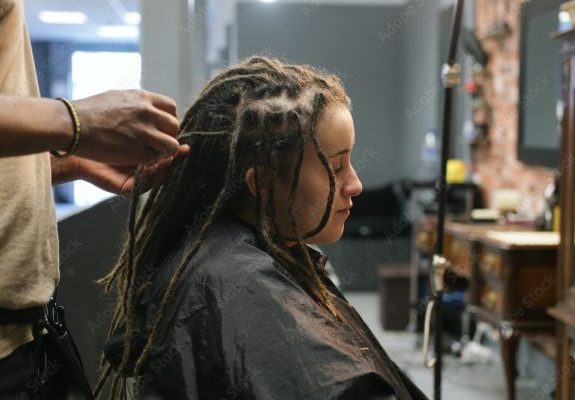
Do you want to rock a head full of dreadlocks? If you have long hair, these classic and one-of-a-kind coils will look great on you. Starting dreadlock with long hair is an exciting journey that takes time and commitment to remain on a smooth path.
Understanding Dreadlock With Long Hair
Long hair offers a fantastic starting point for dreadlocks, but there are some key things to understand before embarking on your dreadlock journey. By understanding its advantages and considerations, you can create beautiful and healthy dreadlocks that showcase your unique style.
Advantages of Long Hair For Dreadlocks
- Flexibility: If you have long hair, you have more power over how your dreads look in the end. What you want about your dreadlocks is that you can pick the size, length, and style.
- Length to Fit Different Styles: Long hair can be split into more dreadlock sizes, from thin and wispy to thick and chunky.
- More Freedom with Techniques: Some ways to make dreadlocks, like linking with a crochet hook, work better with longer hair because you have more to work with.
- Process of Maturity: Long hair can take longer to fully develop into dreadlocks, but this lets the locking process happen more slowly, which keeps the hair from breaking.
Considerations for Long Hair Dreads
- Weight: Dreadlocks can make long, thick hair feel heavy. You might want to start with shorter dreadlocks or talk to a loctician about how to manage the weight.
- Patience: The locking process takes time, and with long hair, it might take longer to see fully formed dreadlocks. Relax and enjoy the trip.
- Maintenance: Long dreadlocks need regular care, like untangling new hair and separating dreads that are joined together. If your hair is longer, this may take longer.
- Health of the Hair: Long hair can get dry and break easily. To keep hair healthy, make sure it stays hydrated and is handled gently while it’s being locked.
How To Start Dreadlock With Long Hair
Let us delve into the step-by-step process of starting dreadlocks with long hair, from preparation to maintenance.
Know Your Hair Texture
Knowing your hair texture is the most crucial step to getting dreadlocks for long hair. Dreadlocks work with most hair textures, but the formation process varies. Coarser hair may lock up faster, while finer hair may need more assistance. High porosity hair absorbs products easily, so use natural, gentle ones.
The Dreading Process
To create dreadlocks, start with clean, product-free hair and use a clarifying shampoo to remove residue. Divide your hair into sections based on desired dreadlock size and secure them with clips or hair ties. Apply your chosen method (twist and rip, two-strand twist, or backcombing) to each section from root to tip. Use a crochet hook to tighten loose hair at the base of the dreads for a neater look, being gentle to avoid damaging hair.
Choosing Your Dreading Method
There are a few different ways to start dreadlocks, and each has its benefits:
- Twist and Rip: To do this popular style, you twist sections of hair together and then gently pull them apart to make knots and help the hair lock.
- Two-Strand Twist: In this style, you separate strands of hair and twist them together, holding them in place with a clip or band at the base. The curls will turn into dreadlocks over time.
- Backcombing: To make a base for the dreads, tease the hair upwards with this method. Because it can be rough on hair, it’s best for professionals or people with a lot of experience.
Dreadlock Maintenance
To maintain dreadlock form, new growth must be retwisted periodically. Consult a loctician or learn retwisting techniques. Wash dreadlocks every 1-2 weeks with a gentle shampoo and moisturizing conditioner. Separate dreadlocks gently in the early stages to avoid breakage. Keep dreadlocks hydrated with natural hair oil or a dreadlock-specific moisturizing spray to prevent dryness.
Frequently Asked Questions and Answers About How To Start Dreadlock With Long Hair
1. Is my long hair suitable for dreadlocks?
Most hair types can form dreadlocks! Coarser hair locks faster, while finer hair may need help, like interlocking. High porosity hair absorbs products quickly, so use gentle, natural products to prevent buildup that slows locking.
2. What size and style of dreadlocks should I choose for my long hair?
Long hair gives you more control! Decide on the size (thin, medium, thick) and style (traditional, freeform) you want. Smaller sections make thinner dreads, while larger ones make thicker ones. Research various styles to find your fit.
3. What’s the best way to start dreadlocks with long hair?
Twist and Rip, Two-Strand Twist, and Backcombing are popular methods for creating dreads, each with pros and cons.
4. How do I start the dreading process?
Wash and dry hair, section based on desired dreadlock size, choose a method and tighten up with a crochet hook for a neater look.
5. How do I care for my long dreadlocks?
Maintain dreadlock form by retwisting new growth, washing for 1-2 weeks with gentle shampoo and conditioner, gently separating fused dreads, and using natural hair oil or a dreadlock-specific moisturizing spray.
Conclusion
Dreadlocks take time to mature, and it’s important to enjoy the unique stages of their development. To promote healthy hair growth, eat a healthy diet rich in vitamins and minerals, and drink plenty of water. Sleep on a silk or satin pillowcase to reduce friction and prevent breakage during the early stages. Personalize your dreadlocks with beads, wraps, or cuffs to showcase your style. With dedication and these tips, your long hair can transform into a stunning crown of dreadlocks.

Leave a Reply